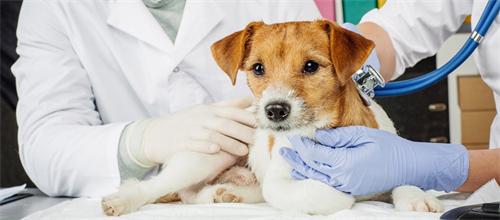Proactive Care: The Promise of Preventive Pet Care

We hate to imagine our pets getting sick—but the reality is that early detection can often mean the difference between a simple treatment and a serious illness. In recent years, preventive care has become a core aspect of veterinary care. Just as in human medicine, pet prevention through vaccinations, regular screenings, and early intervention isn't just a financial investment; it guarantees your pet a longer, happier life.
Why Preventive Care Matters?
The Hidden Nature of Illness
Animals are remarkably adept at hiding pain or discomfort. This instinct stems from survival behavior—in the wild, showing weakness might attract predators. For pet owners, this means a cat or dog can appear perfectly healthy even when illness is lurking. By the time overt symptoms appear, the condition may already be advanced. Preventive care allows veterinarians to detect problems before they become serious.
Prevention is often cheaper and kinder
Treating illness early often means less trauma, shorter recovery time, and lower medical costs. Routine blood work, vaccinations, and parasite prevention may seem like extra expenses, but they often save owners from costly emergency treatment later. Preventive care doesn't just save money—it also prevents pets from suffering unnecessary pain and stress. The Importance of Baselines
Even healthy pets need testing. Establishing baseline values for blood, organ function, and physical condition provides veterinarians with a baseline. Even subtle changes—a slight increase in liver enzyme levels or a subtle change in kidney function—can signal a problem long before symptoms appear. Tracking these baselines over the years can help detect trends early.
Adjusting Care According to Life Stage
As your pet ages, preventive care changes accordingly. Puppies and kittens require frequent vaccinations and parasite checks, while adult pets require annual screenings and dental care. Senior pets typically require more comprehensive exams twice a year. The key is flexibility—adjusting the frequency and focus of care according to the pet's age.
Core Pillars of Preventive Care
Preventive care relies on three pillars: vaccination, screening, and early intervention. Each pillar plays a unique yet interconnected role.
1. Vaccines: Boosting Immunity and Preventing Outbreaks
Vaccines are the cornerstone of preventive care. They train the immune system to recognize and fight infectious diseases, preventing them from taking hold. Veterinarians categorize vaccines as core and non-core.
Core vaccines are mandatory for all pets. For dogs, core vaccines typically include rabies, canine distemper, parvovirus, and adenovirus. For cats, core vaccines include rabies, feline herpesvirus, calicivirus, and panleukopenia.
Non-core vaccines vary depending on lifestyle, region, and exposure risk. These vaccines may protect against Lyme disease, kennel cough, canine influenza, or feline leukemia virus.
Pets that are strictly indoors may not need all optional vaccines, while pets that frequently travel, hike, or visit the groomer may require more extensive protection. A tailored plan ensures effective and minimal intervention.
Puppies and kittens typically receive a series of vaccines over several months to build initial immunity. Subsequently, booster shots are needed to maintain immunity, usually annually or every three years, depending on the vaccine and region. Rabies vaccinations are subject to legal requirements, which vary, but typically occur on a one- to three-year schedule.
Modern vaccines are safe, reliable, and rigorously tested. Minor side effects, such as pain or temporary fatigue, may occur but typically resolve quickly. Severe reactions are rare, but owners should still monitor their pets closely after vaccination. The benefits of vaccination—preventing deadly diseases like rabies or parvovirus—far outweigh the risks.
Beyond personal protection, vaccines also help protect the community. High vaccination rates can create "herd immunity," reducing the spread of infectious diseases. Vaccines remain one of the most effective public health tools ever developed, for both pets and humans.
2. Health Screening: Looking beyond the surface
Vaccines protect against external threats, while screenings reveal what's happening inside. Regular physical exams, blood tests, and imaging tests can help detect illness early—often before physical signs appear.

Common Diagnostic Tests
Complete Blood Count (CBC): Measures red and white blood cells to identify anemia, infection, or inflammation.
Blood Chemistry: Assess liver and kidney function, electrolyte balance, and blood sugar levels.
Urinalysis: Detects indicators of urinary tract infections, kidney disease, and diabetes.
Stool Examination: Detects internal parasites that can cause digestive problems or be transmitted to humans.
Heartworm and tick-borne screening: Identify heartworm and regional diseases like Lyme disease or ehrlichiosis.
Thyroid and hormone testing: Detect thyroid disease, Cushing's disease, and other endocrine disorders.
Cancer biomarker testing: Newer blood tests can reveal early cancer markers, especially useful in older or high-risk breeds.
Imaging (X-rays, ultrasounds, electrocardiograms): Non-invasive imaging can help identify heart disease, tumors, and organ changes.
Each test contributes to your pet's overall health. Taken together, they create a complete picture, enabling earlier detection and better treatment outcomes.
Screening is most effective when followed long-term. Comparing current results to past baselines can reveal patterns that might not be apparent in a single test. Breed-specific risks are also important; for example, Dobermans are prone to heart disease, while Persians may develop kidney disease. A tailored screening program makes preventive care truly effective.
3. Early Intervention: Take Action Before Problems Develop
Preventive care doesn't stop at identifying risks; it's about taking swift action once something seems unusual. Early intervention can transform an impending crisis into a manageable situation.
Recognizing Early Signs
Subtle behavioral or physical changes often serve as warning signs:
● Appetite, thirst, or weight changes
● Increased urination or fatigue
● Vomiting, diarrhea, or constipation
● Unusual lumps, bumps, or skin changes
● Bad breath or visible cavities
● Mood changes, hiding, or decreased activity
Even minor abnormalities can have serious consequences. Trust your instincts—you know your pet best.

When your veterinarian detects an early abnormality, additional testing will be performed to confirm the cause. From kidney changes to hormone imbalances, many problems, if caught early, can be managed with diet, medication, or supplements. Quick action often means less invasive treatment and a better quality of life.
The Future of Preventive Pet Care
The field of veterinary care is rapidly evolving. New technologies and research are expanding the scope of preventive care for pets.
Biomarkers and "Liquid Biopsies"
Emerging blood tests can detect disease-specific biomarkers—tiny molecular signals that can reveal inflammation, metabolic stress, or cancer at a very early stage. These tests are becoming increasingly common, especially for older pets and breeds susceptible to certain diseases.
Smart Collars and Health Trackers
Much like humans use fitness trackers, pets can now wear smart collars to monitor heart rate, breathing, sleep, and activity levels. When a pet's patterns deviate from normal, the system alerts the owner and veterinarian. Over time, these devices will be integrated with medical records to develop personalized preventative care plans.
Predictive Health Algorithms
Machine learning models are being developed to predict disease risk based on a pet's age, breed, lifestyle, and medical history. In the near future, these systems could alert owners when their pets need vaccinations, screenings, or dietary changes.
Telemedicine and Remote Monitoring
Virtual consultations make it easier for pet owners to seek advice without putting pressure on their pets. Combined with wearable technology, telemedicine can provide ongoing preventive care and early triage of emerging issues—detecting them before they become emergencies.
Community Care
Mobile vaccination campaigns, community health events, and low-cost screening clinics are expanding access to preventive healthcare services. This not only protects individual pets but also strengthens community disease control.
Recommended for you



